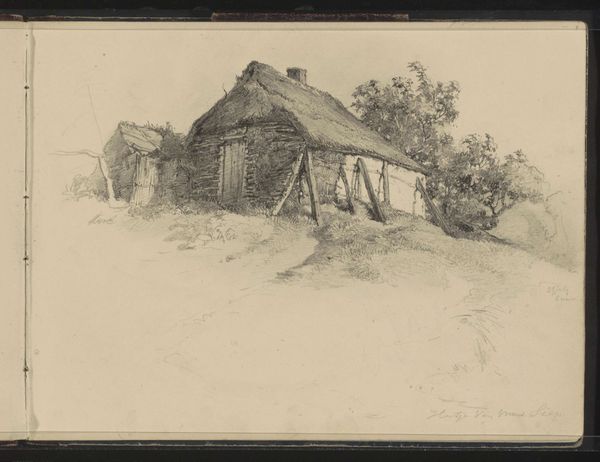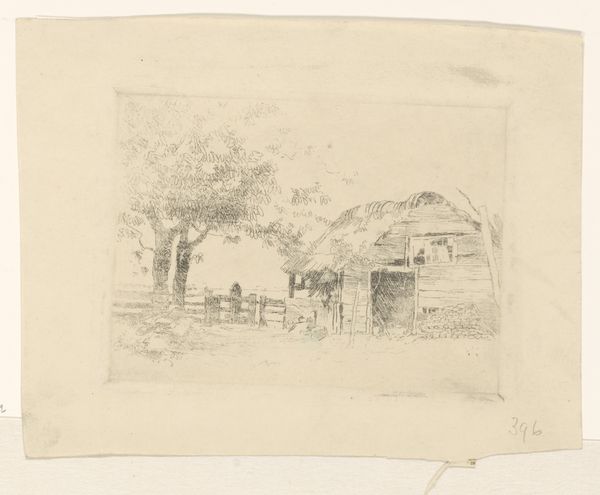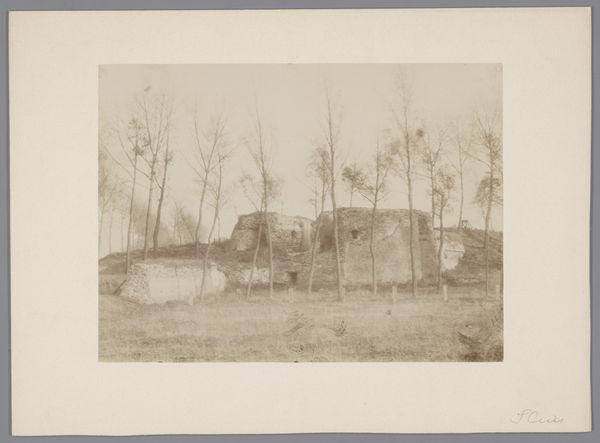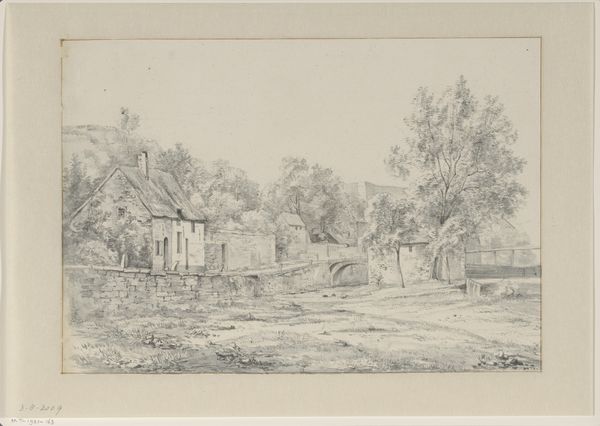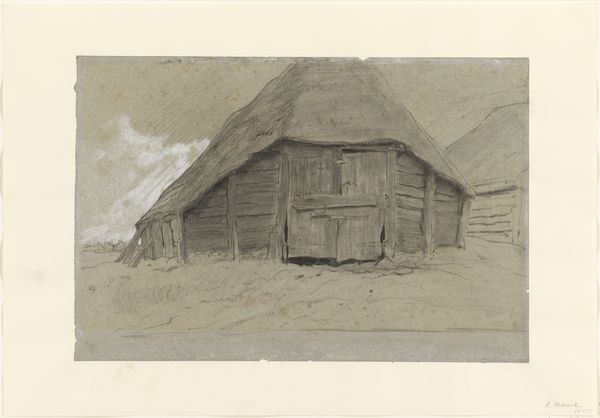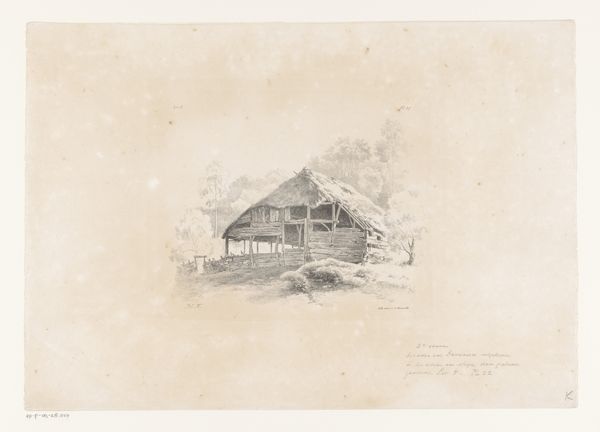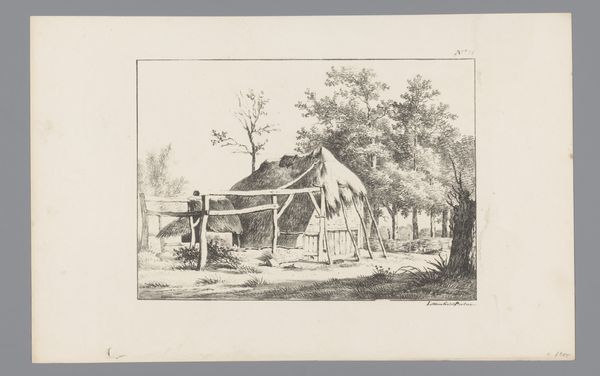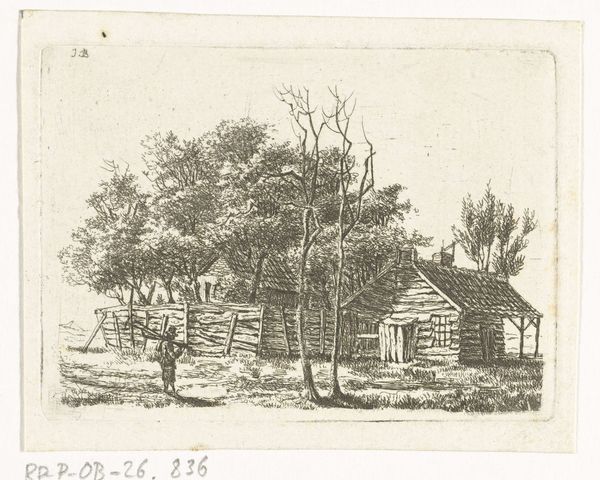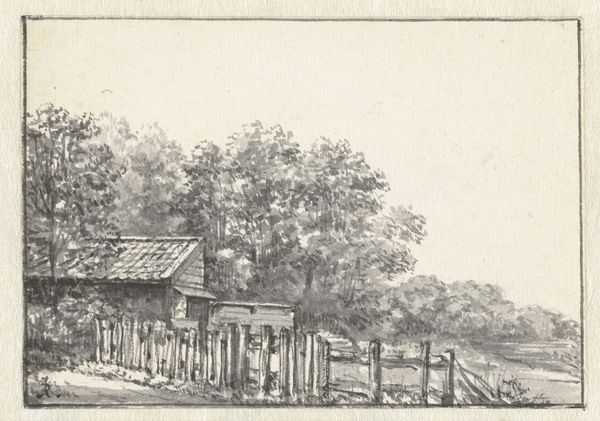
Dimensions: height 305 mm, width 430 mm
Copyright: Rijks Museum: Open Domain
Editor: So, here we have "Boerenschuur te Skandshagen" or "Farmhouse in Skandshagen," a pencil drawing, possibly from the 1870s, by Gerhard Munthe, housed in the Rijksmuseum. I'm struck by how simple it is, almost stark, but in a calming way. What stands out to you in this piece? Curator: Ah, yes, Munthe's Skandshagen. It feels like stepping back into a quieter world, doesn’t it? Notice how he’s used such delicate lines to create depth. For me, it evokes a sense of nostalgia. Do you get the sense of a particular mood from it? Maybe something melancholic, perhaps reflecting on simpler times gone by? It makes me think of my grandfather's farm... Editor: Yes, melancholic is a good word. It’s very subdued. I’m also wondering about the social context – was he romanticizing rural life, or documenting it realistically? Curator: Good question! I think it’s both, actually. Munthe, while often dabbling in romantic nationalism, here, allows for a touch of realism. It's not overly glorified. The humble materials, the slightly decaying structure… it suggests an honesty. Almost like a memory being recalled with fondness, but without excessive embellishment. Don't you feel the honesty present here in contrast to, say, idealized portrayals of farm life in that era? Editor: I see what you mean. It's not a grand, idealized view. It's more intimate and personal. I wouldn't have picked up on that subtlety without your input. Curator: Art is a constant dialogue, isn’t it? A push and pull between the objective and the intensely personal. That’s the beauty of it! I'll think about this "melancholic honesty" of the art piece for days to come, pondering the feelings between honesty and embellishment... Thank you for noticing that little something special. Editor: Definitely. This has really opened my eyes to a different way of looking at landscape drawings.
Comments
No comments
Be the first to comment and join the conversation on the ultimate creative platform.
